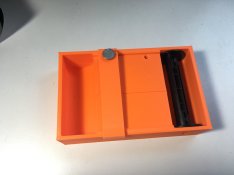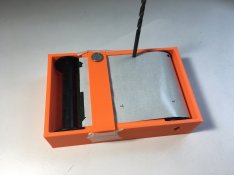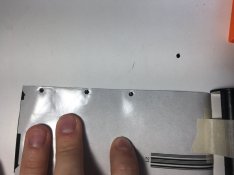Hey everybody, thought I'd give a little update! I've rethought my goals for this project, and considering all of the input on this thread I think instead of remaking fully complete 126 cartridges and selling them, it would make more sense to make a 3D-printed device that allows the easy conversion of 120 film to 126 film. I haven't made a huge amount of progress, but I thought it would be good to see if anyone has input or suggestions for some hurdles I'm facing.
First of all, here is the device at the moment, the goal is to make something that will punch perforations at the correct spacing and then slit the 120 film down to 35mm width.
View attachment 250957
View attachment 250958
It has a space for a feed and takeup spool.
View attachment 250959
View attachment 250960
View attachment 250961
View attachment 250962
The way it's supposed to work is you would wind until the beginning of the film and then punch the first hole. Then you would continue to wind until a catch slips into the first hole made, preventing you from advancing the roll and providing perfect spacing. (The catch here is simulated by a drill bit). Punching the hole will ideally reset the catch and allow you to keep winding until the next punch is to be made. You do this 20 or 24 times and then you have a roll of 120 film perforated for a 126 cartridge, including backing paper. For slitting the film to the correct width, I'm planning on adding a blade before or after the punch.
Now here's where the problems begin. The biggest issue right now is how to cleanly punch through the backing paper and film. I have tried a 3D-printed two-prong punch, which surprisingly worked okay for film-only, but didn't work on both the film and backing paper. I then tried a nail which i cut down into a two-prong punch which is the one you see in the pictures, however it sort of mangles the film and doesn't punch cleanly - as you see below.
View attachment 250963
View attachment 250964
If anyone has any ideas for how to easily and cleanly punch the holes that would integrate into this 3D-printed device I would love to hear it! I will try to keep updating this more frequently from now on!



















